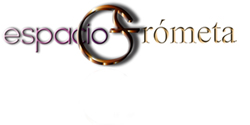NOSTALGIC EVOCATION
Miguel Barnet
Cuban writer
President of the Cuban National Writers and Artists Union. (UNEAC)
Gilberto Frテウmeta goes riding with no saddle on his Merry go round of colors around two orbits equally challenging, the abstraction that sparkles in the turning of the playing machine and the poetic figurativism to which he strengthens searching for an anchor that somehow fixes his expansible personality to the earth.
The conjunction of the recovered childhood fantasies and the wise maturity that forces us to look inside ourselves is united to this symbiosis. As sudden hallucinations the abstractions in Frテウmeta lead to the surprise, and the stroke of steady pulse establishes the novelty that the artist imposes the public.
The curious thing is that in this game of lights there isn't anything definitive, the circle never closes, the imagination stays open, exposed to external changes, ductile and virtual.
His abstract work as the figurative gives certainty and balance. Pure stains and chromatic textures transform his canvases into lyrical rehearsals which explore like in few Cuban painters the contemporary man's psyche. Vegetables, bucolic, Frometa's works are expression of the deepest human sensibility: unique, mysterious sensations, erotic groans, cries of the spirit. The light that the artist achieves produces puffs in the soul, jumps in the stomach; it is a revealing light that places, above everything, the color which issues contradictory signs, happiness and sadness.
I've been years delight with Gilberto Frometa's work, seeing in them multiple phantoms, concerned beloved, warm appearances. Next to him while he paints, the shade of Matisse and Carlos Enrテュquez, the hand of Servando Cabrera Moreno; the generous, strong and concise hand of the master that in his moment insinuated horses in his paintings of militiamen. Everything assimilated in perfect metabolic synthesis.
Hedonic, his paintings makes us accomplices of a dialogue between the animal and the man without precedents in the Cuban plastic art. The horse, that millennial beast "created by a God from the south wind", appears in his paintings, in all its manliness and elegance like telling to man: follow me and you will find the way to freedom.
Years ago I saw an exhibition of horses in the Tate Gallery, painted by George Stubbs at the end of the eighteenth century. In that moment I didn't know Frometa's horses: I thought that as the English painter no one would paint equines so human. I made a mistake. The horses of the Cuban look into your eyes, they neigh, they smell like horse, they are alive; they give desires of touching them. They are always seen in front with their loose manes and their defiant lips, while the human beings adorned with top hats and bow tie necks contemplate them as if they were gods of an Olympus emerged from the infantile imagination. In flesh and bone, or wooden, of stick, metamorphosed, blended through the fog in the artist窶冱 memory in an incomparable transparency, Frometa窶冱 horses store the most expensive memories of his sentimental binnacle窶冱 notebook and makes us go back to that Admiral窶冱* image in his Campaign diary when he compared the hair of an Indian woman with horse silk texture. Since then, this animal窶冱 image entered in the history of Cuba, a lot before its hooves resounded in the island and became very soon a symbol of the national epic.
Mixed techniques to achieve a plastic matter of supreme quality, variety of instruments, multiple references, chalcography, photomontages, silk screen, Indian ink, nib pen, are hardly some of the resources with which the painter makes gala to achieve a true symphony of expressive possibilities.
If like an Arab proverb says the childhood is the mother of memory, Gilberto Frテウmeta, submerged in the waters of that memory, has been able to rescue his personal treasure against all predictions of time. And has given shape to his interior world in beautiful samples of his art. With nostalgic evocation has said to his time, that insatiable predator: you have been able of anything against me, you have made nothing to disappear anything from my memory. Gilberto Frテウmeta, sententious, confirms once more that only art is who saves or destroys.
Only art.
*Is referring to Christopher Columbus notes from his voyages with the three ships to discover the American Continent in 1492.





